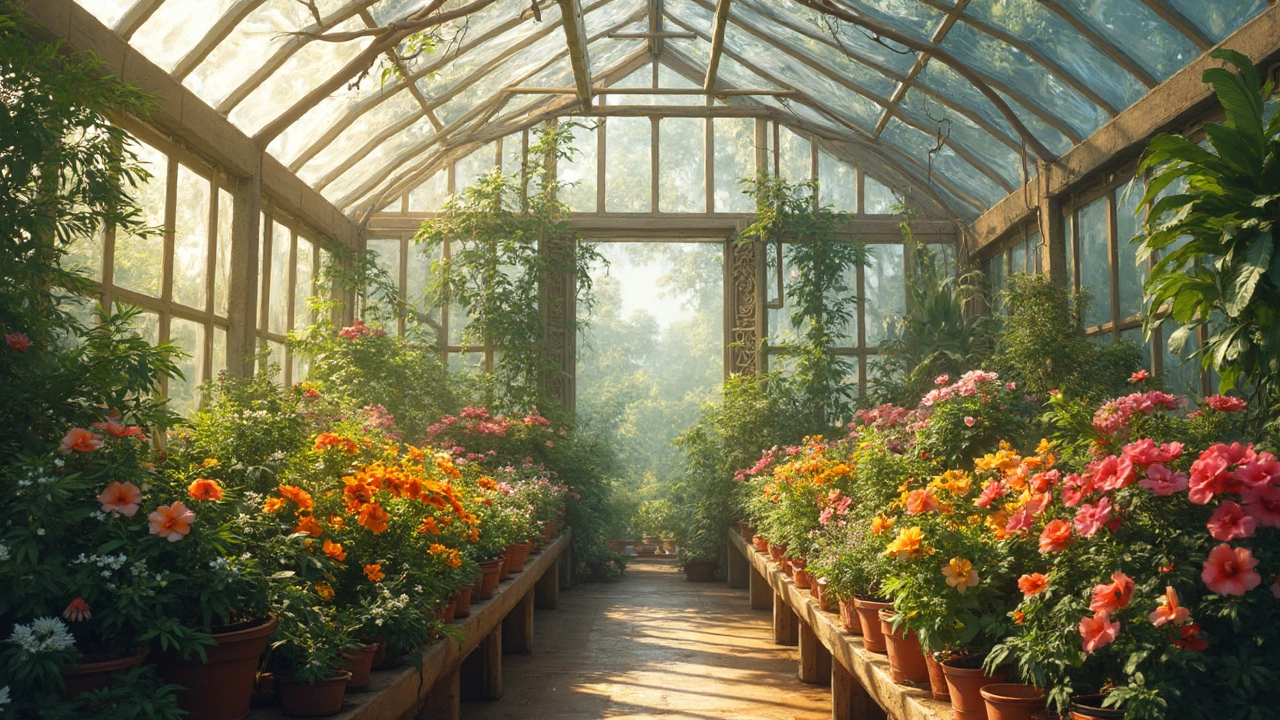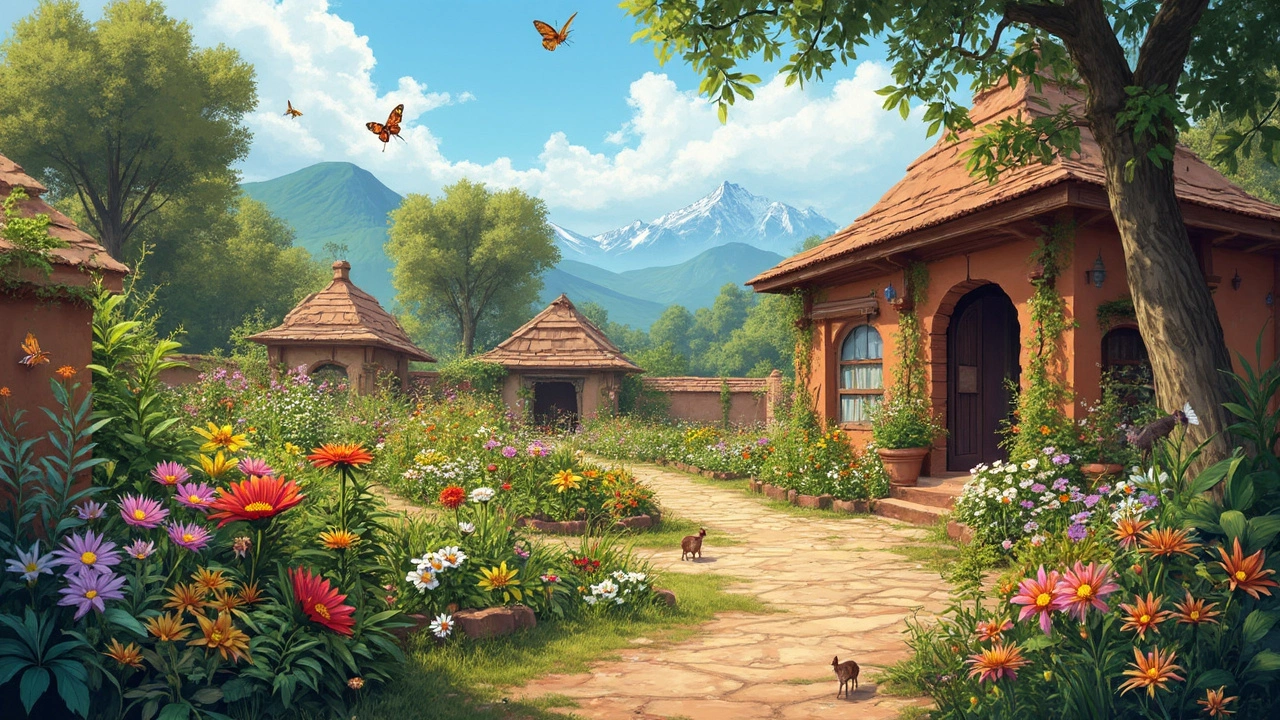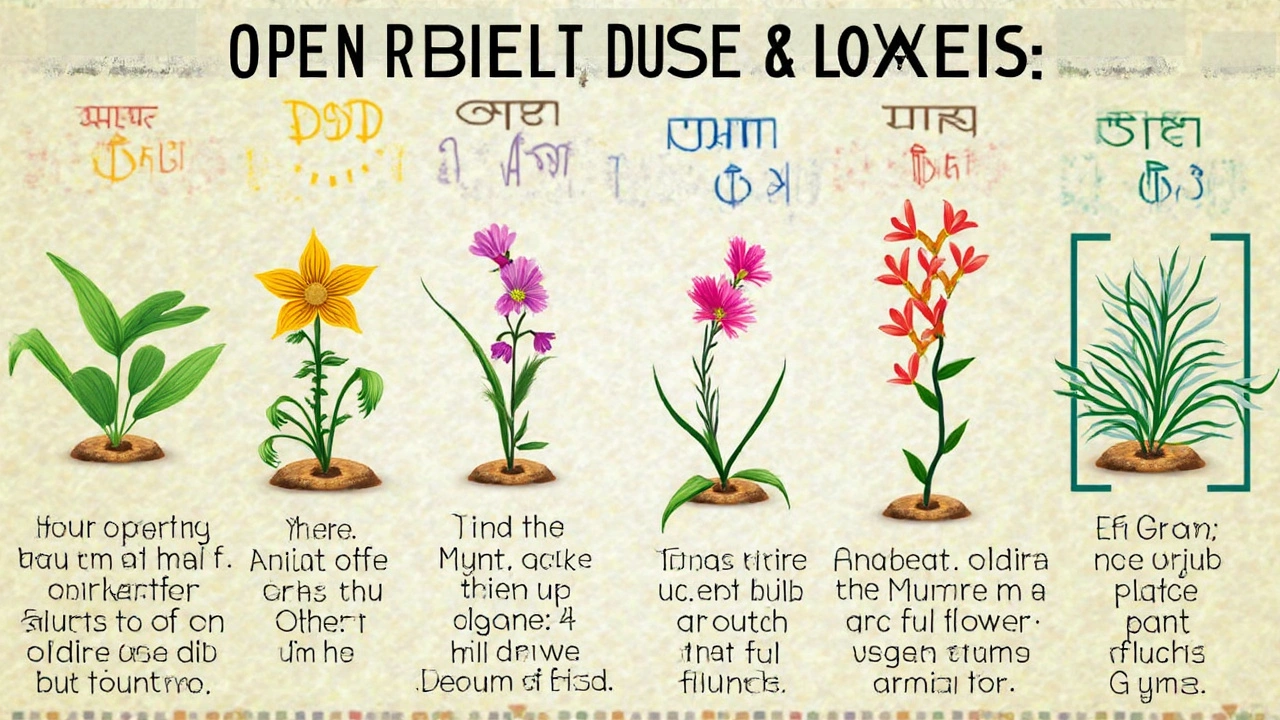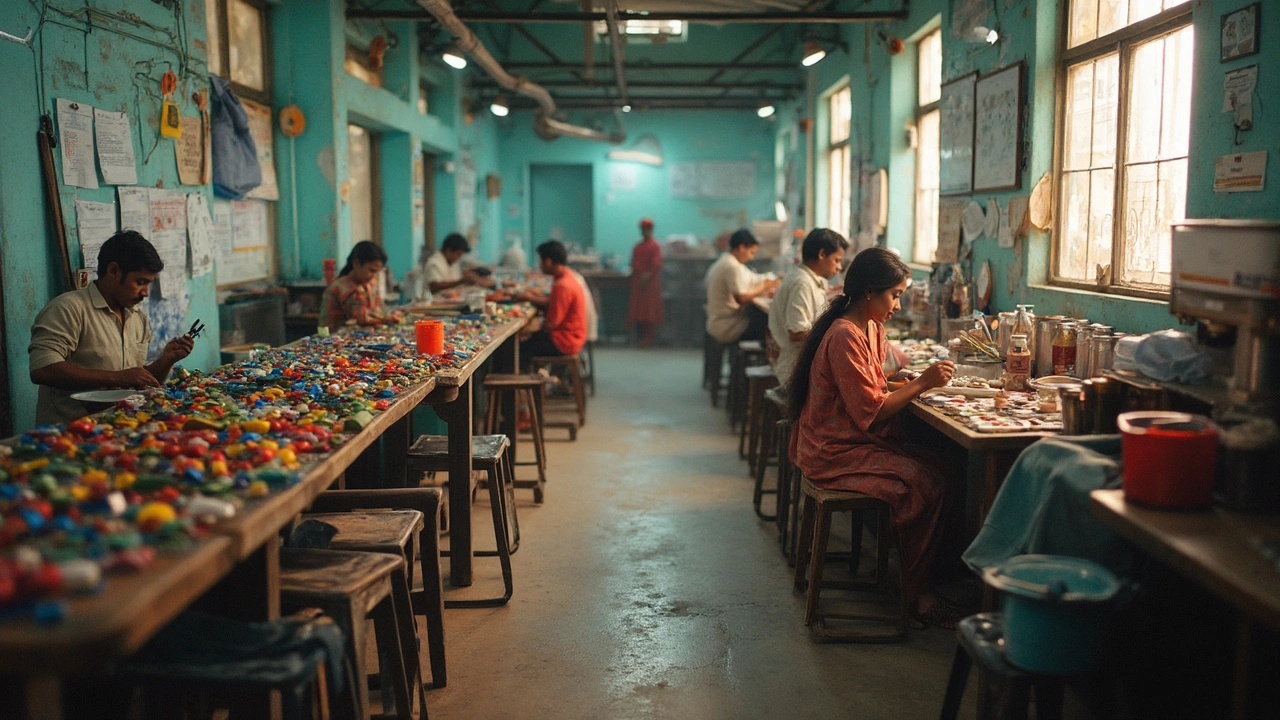What Not to Grow in a Greenhouse: Flower Gardening in India

Starting out with greenhouse gardening can be exciting, especially if you're in India, where the climate varies a lot. But not every flower is happy indoors, even in a controlled environment like a greenhouse. You might think, "Hey, I'll just grow everything I love," but here comes the tricky part—some flowers just won't thrive. So, knowing what not to grow could save you a bunch of headaches and wasted time.
Take hydrangeas, for instance. They may look fantastic, but they often hate the warm, humid greenhouse conditions. Their thirst for a natural outdoor ebb-and-flow isn't satisfied under glass. Instead of lush blooms, you might end up with wilting leaves and no flowers. And then there's lavender, that aromatic darling loved by many. While fragrant fields may be your dream, stick it in a greenhouse, and it may struggle with mold due to poor air circulation.
Choosing wisely means understanding what your plants need, and some simply need the outdoor sun and breeze. In the next piece, we'll dive into flowers that fight against greenhouse life and what makes them such rebels. But don't worry, stick around for alternatives that'll actually enjoy being your greenhouse guests!
- The Reality of Greenhouse Life
- Flowers That Struggle in Greenhouses
- Understanding Climate Needs
- Practical Alternatives for Indian Greenhouses
- Maximizing the Greenhouse Space
The Reality of Greenhouse Life
Greenhouses can feel like magic shelters for your plants, offering a steady climate no matter what's happening outside. In a country as diverse as India, where one state can be roasting and another chilly, greenhouses seem like the ultimate answer. But it's not all sunshine and daisies.
Keeping plants inside a greenhouse changes the game. You control the temperature, humidity, and sometimes even the light. While that sounds amazing, this closed environment can create unexpected challenges. Plants that naturally bask in varied weather conditions might find the stability a bit too stifling.
Imagine your flower garden in India enjoying the monsoon rains one season and the hot sun the next. This variety is something some plants thrive on, and a greenhouse doesn’t always replicate it the way they want. If there's one thing to know, it's that while greenhouses offer control, too much of a good thing can be problematic for particular flowers.
The sense of control is a double-edged sword when it comes to humidity. In many parts of India, humidity can rise fast, and in a greenhouse, it can get trapped. This is great for some tropical plants, but a death sentence for those prone to mold or fungi. You see, a good airflow is crucial, and a closed space can make air circulation harder to manage.
Light is another key player. Greenhouses often provide consistent light, which some flowers find monotonous. They're used to the natural shift of the sun across the sky. If you’re trying to grow plants like certain roses or chrysanthemums, expect them to sulk under the ceiling of glass.
Here's a quick tip: use dynamic ventilation tricks like opening windows during the cooler hours or installing fans to keep that air shaking things up a bit. By understanding what specific flowers need, you can use the greenhouse to your advantage, but it's about striking the right balance.
Flowers That Struggle in Greenhouses
Ever tried to grow something in your greenhouse only to find it barely surviving? It happens, and it’s not always your fault. Some flowers just aren't made for greenhouse life, especially here in India.
First up, let's talk about lavender. It's a popular plant, thanks to its soothing scent. But pop it inside a greenhouse, and you're setting it up for a bad time. Why? Lavender loves dry conditions, and greenhouses tend to be humid, perfect for mold and not so much for healthy lavender.
Then, there's hydrangeas. These beauties love the outdoors where they can soak up rain and sunlight in the right balance. Put them in a greenhouse, and they often face temperature stress. They like it milder, and the fluctuating conditions inside can lead to more browning than blooming.
Another tricky one is geraniums. While they might seem easy-going, they thrive in well-ventilated spaces. A stuffy greenhouse without proper airflow could cause them to become leggy and weak, leaving them far from their vibrant best.
It's not just these—let's not forget about daisies. They have a penchant for lots of light and tend to droop or stretch if they don't get it. India’s bright sun is a friend to them, but a greenhouse’s filtered light doesn't quite do the trick.
Understanding these quirks isn’t just about avoiding disappointment. It opens up space for plants that do thrive under glass. Swap out those striving soldiers for ones that'll give you lush abundance instead.
| Flower | Common Issue in Greenhouses |
|---|---|
| Lavender | Mold due to high humidity |
| Hydrangeas | Temperature stress and browning |
| Geraniums | Lack of airflow leads to weakness |
| Daisies | Insufficient light leads to stretching |
Greenhouse gardening requires strategic planning, but with a little knowledge, you can avoid these common pitfalls and grow less stressed and more thriving plants.

Understanding Climate Needs
Getting the climate right for a greenhouse plant is not just important—it's crucial. Plants have their own vibe when it comes to temperature, humidity, and sunlight. When you build a greenhouse, the idea is to control these aspects, but knowing what each plant truly needs makes a world of difference.
First up, let's talk temperature. Some plants are like sunbathers, enjoying a little extra warmth. Others, however, might feel like they're stuck in a sauna. An important fact is that many Indian flowers, especially those native to cooler regions, like their nights cool. So, in your greenhouse, pay attention to maintaining a daily temperature shift—warmer by day, cooler by night.
Humidity is another biggie. Certain flowers, like orchids, love moisture in the air. But not every flower gardening venture loves the damp conditions. Too much humidity can lead to fungal infections. Make sure your greenhouse has proper ventilation to balance moisture, especially if you're growing plants that prefer drier climates like succulents.
Sunlight, our final climate player, is equally crucial. While we often assume more sun means happy plants, some flowers flourish in partial light. For instance, many blooming greens need dappled sunlight to avoid scorched leaves. Consider shading parts of your greenhouse if you're nurturing such varieties.
Remember, in India, the external weather can shift dramatically from sweltering summers to mild winters. Your greenhouse should adapt accordingly. By tuning into these climate needs and adjusting your setup, you won't just be a gardener; you'll be a plant whisperer, coaxing out the best in every bloom.
Practical Alternatives for Indian Greenhouses
So, you're ready to fill up your greenhouse with plants that thrive in India’s unique climate? Let's talk about some practical alternatives that will love the environment under glass. The key is to choose blooms that not only tolerate the conditions but also make the most of them.
First up, consider succulents. You might think they’re just for deserts, but they’re actually great in a greenhouse, especially if you’re dealing with erratic Indian weather. They don’t need a ton of water and are super low-maintenance. Plus, they're trendy and add a modern touch to your space.
Next, think about growing orchids. They’re not beginners' plants but offer a rewarding challenge. Orchids love the controlled atmosphere of a greenhouse, where you can keep humidity levels just right. Imagine having those exotic blooms adding a splash of color from time to time!
If green is your game, herbs like mint, basil, and coriander can also thrive. These herbs love the warm temperatures and can be your mini kitchen garden, all year round. They’re super handy, aren’t they?
For an explosion of color, marigolds are a fantastic choice. Known for their vibrant hues, these flowers can also help keep pests at bay thanks to their distinct smell. They practically do double duty by beautifying your garden and acting as a natural shield.
Here's a quick-reference table of plants you can safely bet on:
| Plant | Special Requirement |
|---|---|
| Succulents | Minimum water |
| Orchids | Controlled humidity |
| Herbs (Mint, Basil, Coriander) | Regular pruning |
| Marigolds | Direct sunlight |
These alternatives will make sure your greenhouse is not just surviving but thriving. Every little flower and plant will play its part in making your gardening goals a reality. Happy gardening!

Maximizing the Greenhouse Space
Making the most of your greenhouse means being smart about how you use the space. You don’t need to cram everything in, but you do want to make sure every plant has its room to grow and thrive. Here’s the thing—it's all about planning and getting a little creative.
Firstly, consider vertical gardening. Stacking shelves and hanging pots are awesome ways to make every inch count. Use sturdy wire or wooden shelves where you can place smaller pots of herbs or flowers. Hanging baskets filled with trailing plants can add layers of beauty without eating up your valuable floor space.
Next, focus on plant compatibility. Some plants, when grown together, help each other out. This is known as companion planting. For instance, marigolds can deter pests from other plants like tomatoes or peppers, making them prime candidates to share space. Mixing and matching like this can enhance productivity without extra effort.
Let’s talk temperature zones. Not every part of the greenhouse is created equal. The south side often receives the most light and is warmer, so reserve this area for sun-loving plants like basil and flowers that thrive in bright conditions. Shadier spots can be perfect for those that prefer cooler, less direct light.
Diversity can be your best friend when organizing your
greenhouse plants. Just because one plant couldn’t hack it doesn't mean another can't flourish. Swap and rotate stubborn plants that aren’t adjusting well—it's like playing a puzzle to see who fits better where without stressing valuable resources—and don't forget to use props like trellises to support climbers or droopy species.
- Think small. Smaller pots can fit in odd spaces, and they're easier to move around as needed.
- Leave pathways. You’ll need to get in there to water, prune, and harvest—so plan out little walkways.
- Utilize layers. Look at your space from the ground up and find pockets to tuck smaller plants onto walls or between larger ones.
And here's an interesting tidbit: a study conducted in a nearby town showed that gardeners who rearrange plants based on growth phases had a 20% higher yield. So, keep moving things around as they grow!
You'll soon learn it's a living, breathing space that can change with the seasons. Ensuring you’ve got a good variety of adaptable plants and using every level of your greenhouse intelligently means you’ll enjoy both function and beauty. Ultimately, it's all about experimenting and learning as you go.





